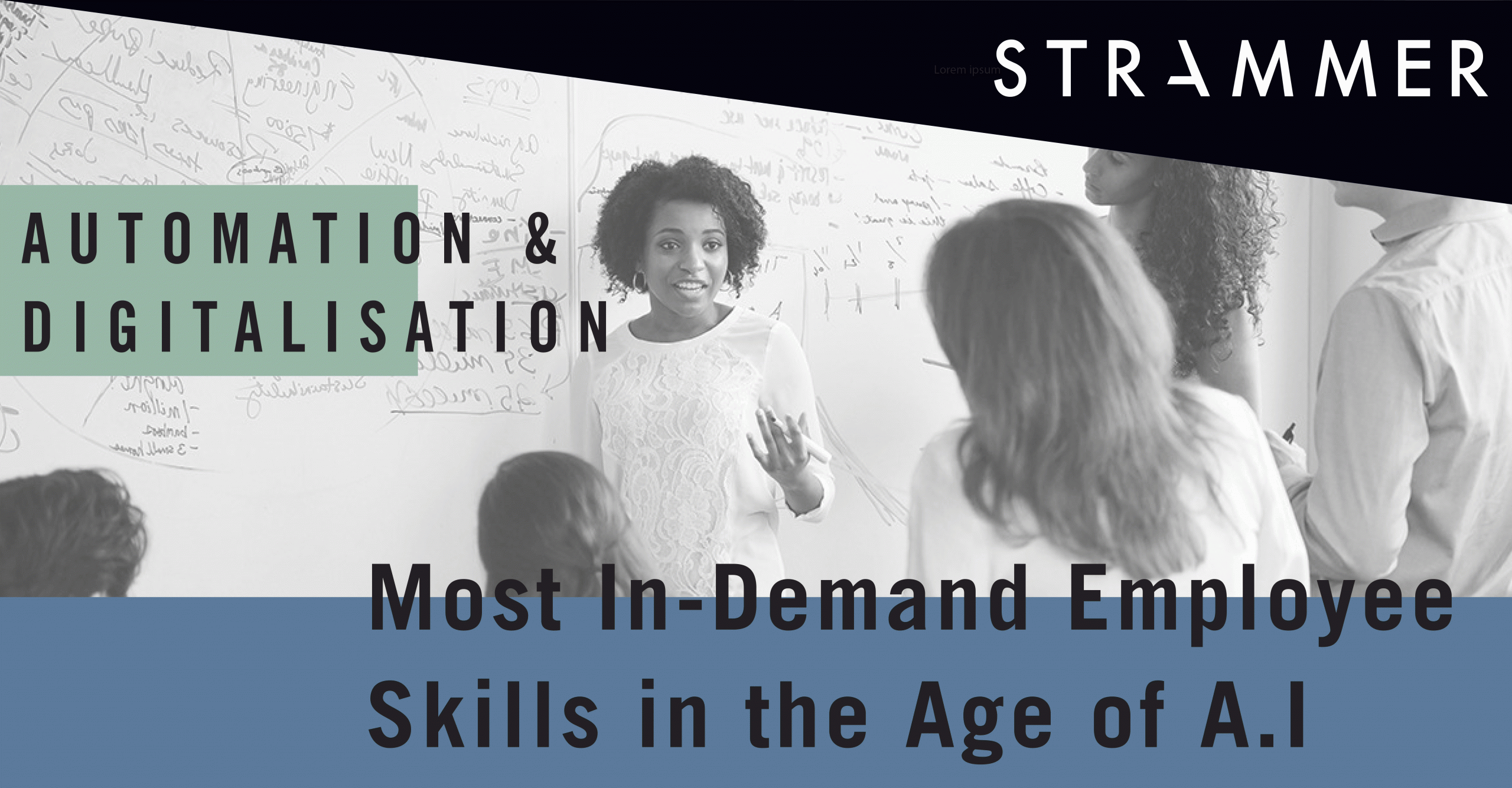Why should we develop skills that won’t be automated?
Automation and digitisation are replacing workers in many tasks. An IBM 2019 study conducted in the 12 largest organisations in the world, showed that 120 million workers will need skills training over the next 3 years as a result of the growing number of tasks performed by A.I.
However, digitalisation and automation do not only bring disadvantages. They allow employees to perform their tasks faster, more effectively and easily. For example, collaborative robots work alongside humans to optimise their work.
It is not easy to tell what the exact consequences of A.I. on the workforce are or even which jobs it will replace. Thus, workers should put their efforts and focus, on skills/traits that robots cannot acquire.
For instance, one of the things employees should work on are soft skills. They cannot be developed by software, programmes, or robots. These are the skills we acquire from experience, but we can also develop them. They are related to human emotions and emotional intelligence. A 2018 Workplace Learning report showed that 57% of leaders stated soft skills are more important than hard skills.
Some of the soft skills we are referring to are:
♦ Creativity. Deloitte, World Economic Forum and the Harvard Business Review have said that this skill will be much in demand. It helps workers find innovative and successful solutions.
♦ Problem-solving skills. With automation and digitalisation, employees will work alongside with machines/robots. These skills enable workers to find effective solutions to complex situations and to evaluate the best ways to solve them.
♦ Emotional Intelligence. This translates into the ability to express and control our emotions and understand others. It will be almost impossible for machines to ever do so.
♦ Communication. Machines and robots do not communicate like humans. Our verbal and non-verbal communication, as well as the capacity to understand others are obviously better.
As an example, research from 2018 showed that machines correctly identified echocardiograms 92% of the time. Doctors do this correctly only 79% of the time. But a doctor can show something that a machine cannot: empathy and compassion, essential in this area.
In addition, to prepare for A.I. entering the workforce, data literacy will be crucial. But what is data literacy? It is the employees’ ability to extract and understand data in its context and work it for the benefit of their employer. This requires not only data analysts but also employees’ training on this matter. Thus, it is essential to have access to the company’s data, know how to analyse it and make decisions based on it.
With so much to learn and retain, workers and companies need to invest in training/workshops to develop these skills and make employees feel comfortable around new technology. Leaders and the workforce need to ask themselves if they are developing skills that will not be automated.
References:
- This Is the Most In-Demand Skill of the Future, July 2019, Inc.
- The enterprise guide to closing the skills gap, 2019, IBM
- 5 tips to boost employee skills in the age of AI, September 2019, Information Age
- Data literacy: What it means and why it’s essential for your business, March 2018, InfoWorld





